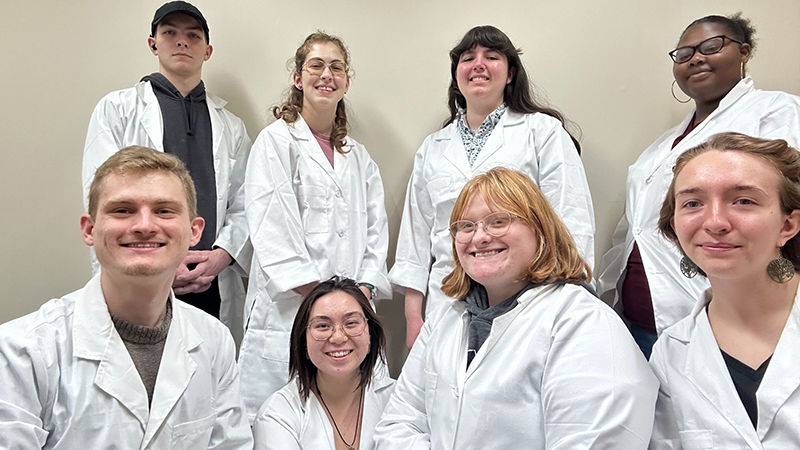Missouri State University senior Austin Brown has begun the project of a lifetime – engaging in the Plant the Moon Challenge.
With the help of his team members and MSU faculty, he is conducting an experiment that will help NASA scientists gain more knowledge about growing crops on the moon.
From Bragg City, Missouri, Brown came to Missouri State to pursue his interest in biotechnology.
Brown is triple majoring in biotechnology, microbiology and biology. and minoring in chemistry and biomedical sciences. He plans to use his degree to work on cancer research for St. Jude’s in the future.
His desire to focus on pediatric cancer and help find a way to eliminate cancer as a disease is personal.
“My sister, Raven, had stage four cancer when she was 9. She was a patient and they treated her. I want to do the same for others,” Brown said.
At MSU, Brown enjoys doing research in the lab.
“I’m usually tinkering with my plants,” he said.
His love for research is what drew him to take on the Plant the Moon Challenge.
More about the challenge
The Plant the Moon Challenge is a global science experiment and research challenge to examine how vegetable crops can grow in lunar or Martian soil.
Participants get real soil simulant from the University of Central Florida’s CLASS Exolith Lab. They must conduct a set of experiments using the simulant to grow crops for a future long-duration mission.
After a 10-week growing period, each team will submit a final report about their experiments to help NASA scientists understand how to use lunar soil to provide nutritious crops for future missions to the moon or Mars.
The experiment includes four phases: research, design, plant and monitor, and analyze and present. During each phase, teams will encounter check point tasks that will help them complete the experiment.
Behind the scenes
Brown found out about the challenge through a Facebook advertisement from the Institute of Competition Sciences. He decided to take it on because he wanted to be involved in more on-campus student research. It would also allow him to be inventive and creative, and channel his interests in biology research.
After signing up for the project, Brown put together a team, which includes:
- Raven Brown (assistant), psychology and creative writing.
- Dora Gilreath (journalist and photographer), journalism.
- Kalea Arberle (minute taker), biomedical sciences.
- Erin Nelson (soil scientist), horticulture.
- Kevianna Tilson (secretary), English education.
- Tyler Bausch (mathematician), physics and engineering.
- Sophie Bryan (artist), art and biology.
“I got a really good circle of minds to work on this project together,” said Brown about his team.
For the project to work, Brown knew he would need support from his professors and an adequate place to conduct the research.
After discussing the project plans with MSU biology professor Dr. Lazslo Kovacs, he provided a space in his lab’s grow chamber for Brown’s team to do their work. In addition, MSU biology assistant professor Dr. Giorgia Auteri allowed the team members to use her lab’s fume hood because they have to work with the lunar regolith, which is a carcinogen.
“Without their help, I don’t know if we would have been able to do this study,” Brown said. “All the professors in the College of Natural and Applied Sciences have been a big help with getting our research up and off the ground.”
The project
The team started formulating and brainstorming a plan on Jan. 22 and the official grow day began on Feb. 5. During the 10-week grow period, the team will keep track of how the experiment develops.
The team’s goal is to try and find a way to produce oxygen with the algae and see if that will be an option for farming on the moon. They are also trying to figure out if the algae could be used to make food such as algae chips.
“We’re focusing mainly on growing plants in lunar regolith and producing new space technology for future expeditions to the moon,” Brown said.
On May 5, Brown and his team will be able to highlight their work in front of NASA scientists and program executives to see if they qualify for Best in Show awards.
If they win an award, Brown plans on continuing with the research.
“I’d try to build my research up from there and see what more we can do with it,” he said.
Discover more from CNAS NewsWatch
Subscribe to get the latest posts sent to your email.

